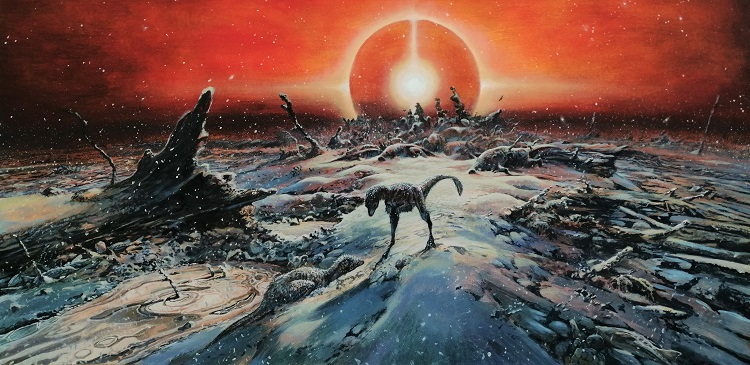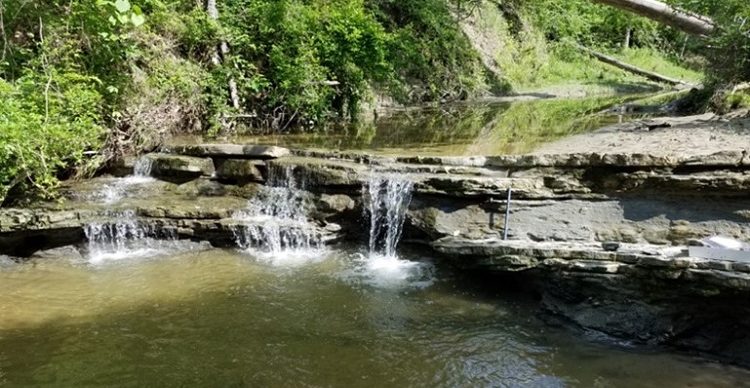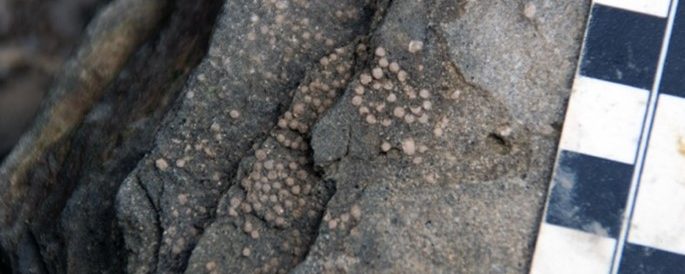
Climate cooling associated with sulphur gases directly contributed to the extinction of the dinosaurs, research carried out at the University of St Andrews has found.
The gases were ejected into the Earth's atmosphere after a six-mile-wide asteroid hit what is now the Yucatan Peninsula around 66 million years ago.
The research, conducted in collaboration with Syracuse University, New York, the University of Bristol, and Texas A&M University and published today in PNAS, explored the consequences of this asteroid impact, known as the Chicxulub impact.
The research team found that sulphur gases circulated globally for years in the Earth's atmosphere, cooling the climate and contributing to the mass extinction of life. This extinction event was catastrophic for dinosaurs and other life but also allowed for the diversification of mammals, including primates.
Dr Aubrey Zerkle, of the School of Earth and Environmental Sciences at the University of St Andrews, said: "One reason this particular impact was so devastating to life seems to be that it landed in a marine environment that was rich in sulphur and other volatiles. The dinosaurs were just really unlucky."
Sulphate aerosols had long been implicated as a primary forcing agent of the mass extinction event, which marked the end of the Cretaceous period and the start of the Paleogene period on Earth, but to what extent was not known.

The new research was able examine the rare sulphur isotopes in material ejected by the impact and deposited in a nearby sea now represented by rocks found along the Brazos River in Texas.
Dr James Witts, of the School of Earth Sciences as the University of Bristol, said: "Our data provided the first direct evidence for the massive amounts of sulphur released by the Chicxulub impact.
"It's amazing to be able to see such rapid and catastrophic global change in the geological record."
Atmospheric sulphur in the stratosphere scattered incoming solar radiation and prolonged planetary-scale cooling for many years after the original impact, causing acid rain and reducing the light available for photosynthesis, which is vital for plant life and marine plankton that form the base of the food chain.
Christopher Junium, of the Department of Earth and Environmental Sciences at Syracuse University, said: "The initial effects of the impact were caused by rock dust, soot and wildfires, but the sulphur aerosols extended the time period over which life would have suffered from extreme cooling, reduced sunlight and acidification of the land surface and oceans, and it was this extended duration of cooling that likely played a central role in the severity of the extinction."

The Cretaceous period, the third and final period of the Mesozoic Era, lasted from around 145 to 66 million years ago and featured a warm climate with reptiles and dinosaurs dominating the planet.
Its end was marked by the Cretaceous-Paleogene extinction event, a sudden mass extinction event which also marked the start of the Cenozoic Era in which we still live today.
Top image illustrates a scene from northern Laurentia (North America) in the period a few weeks after the Chicxulub impact showing the onset of freezing weather and skies loaded with sulfur aerosols. The focus is on the last surviving dinosaurs - here a pair of T-Rex chicks, which somehow survived the initial impact phenomena, but which will soon succumb to the cold. (Image Credit © James McKay - Creative Commons)
Bottom image shows a close up of the rocks exposed along Darting Minnow Creek. The round, white ejecta 'spherules' condensed out of ejecta plume from the vaporised Chicxulub rocks and rained down on the Earth in the period after the impact. The ejecta materials at Darting Minnow Creek contain the sulphur that was derived from the Chicxulub crater and the sulphur isotope anomalies that confirm the formation of abundant stratospheric sulphur aerosols that caused extended cooling after the impact. (Credit © Benjamin Uveges)
The paper 'Massive perturbations to atmospheric sulfur in the aftermath of the Chicxulub impact' is published in PNAS and available online.
Please ensure that the paper's DOI [ ] is included in all online stories and social media posts and that PNAS is credited as the source.






